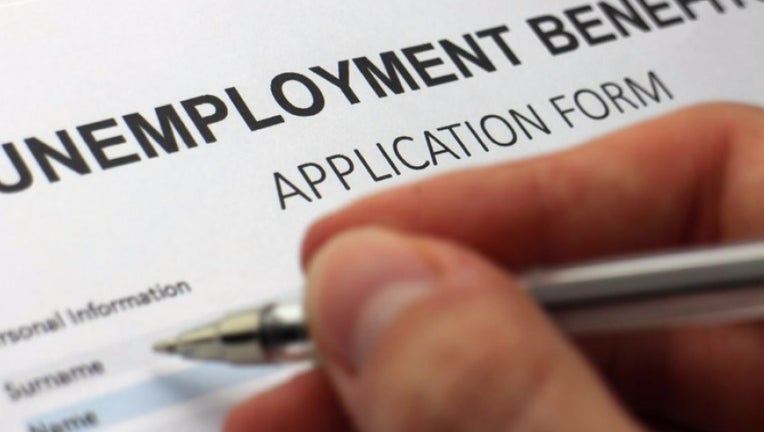Florida unemployment rate jumps to over 14-percent in May amid pandemic

TALLAHASSEE - Florida’s tourism-reliant economy saw its unemployment rate go up to 14.5 percent in May, even while businesses started reopening amid the coronavirus pandemic.
The state Department of Economic Opportunity on Friday announced the 14.5 percent rate, which represents an estimated 1.412 million Floridians out of work from a labor force of nearly 9.71 million.
The department also revised upward the April unemployment rate to 13.8 percent. It had been earlier estimated at 12.9 percent.
The May numbers included jobless rates of 31.1 percent in Osceola County and 23.2 percent in Orange County, as the Central Florida communities rely heavily on the tourism and hospitality industries.
Despite the increase in the state unemployment rate, Adrienne Johnston, bureau chief of workforce statistics and economic research at the Department of Economic Opportunity, pointed to signs people are returning to the workforce after Gov. Ron DeSantis started reopening efforts in early May.
“You can see both things happening at the same time,” Johnston said of the unemployment rate going up while people return to jobs that had been put on hold as part of efforts to slow the spread of the virus.
“There are likely people who are coming back into the workforce, they're encouraged to find jobs,” she said in a conference call with reporters. “And so, they may be counted as unemployed, but they are actively seeking work, and they were not counted as that in the prior month.”
RELATED: Floridians could get 13 more weeks of unemployment under new federal program
The state recorded monthly upticks in workers in a number of fields, including construction, accommodations, food service, hair salons, dry cleaning and health care. Declines remained in publishing, broadcasting, telephone communications, financial activities and government.
Overall, the number of private jobs in the state was down 834,900 from May 2019.
After businesses shut down or dramatically scaled back in late March and April, DeSantis began the first phase of reopening plans on May 4, including allowing restaurants and retail stores to serve limited numbers of customers. DeSantis started the second phase on June 5, which included allowing bars and movie theaters to open in most of the state.
The U.S. unemployment rate fell from 14.7 in April to 13.3 percent May, as Northern hot spots for the virus saw cases slow and as 2.5 million jobs were added nationally.
The pandemic and double-digit unemployment rates come in an election year. The Florida Democratic Party on Friday issued a news release that blamed President Donald Trump for Florida having its highest jobless rate in four decades.
“As COVID-19 cases surge in Florida and the rest of the country, Donald Trump is once again burying his head in the sand instead of tackling the problem --- a president more concerned with his ability to host a political rally than the spread of a deadly virus,” Florida Democratic Party Chairwoman Terrie Rizzo said in a prepared statement.
RELATED: Unemployed Disney workers walk away from food pantry empty-handed
Johnston said the state’s revised rate for April was due to an increase in the number of people claiming unemployment assistance benefits during the month.
Since mid-March, the state unemployment system has drawn 2.57 million claims, with nearly half coming in April, according to the U.S. Department of Labor, which estimated a peak of 505,000 claims during the week that ended April 19.
The federal agency estimated 86,298 new first-time claims in Florida last week.
The state’s tourism and hospitality industries, from restaurants and resorts to theme parks and cruise ships, are expected to see a lag as people try to become more comfortable interacting in social settings under new health requirements.
In Florida, a metropolitan statistical area that includes Orlando, Kissimmee and Sanford had the biggest increase in unemployment, jumping from 16.8 percent in April to 22.6 percent in May. Orlando and Kissimmee are in Orange and Osceola counties, respectively, while Sanford is in Seminole County.
“Based on the information that we see through both the labor force statistics and the job creation numbers, it's very apparent that leisure and hospitality is an area that is continuing to either see job losses or not gain them back quite as quickly,” Johnston said. “And so, with the Orlando metro area, there's a high concentration of those types of jobs in that area. And so, they're more impacted more than other areas in the state.”
The Central Florida metropolitan area had a 2.9 percent jobless rate before major entertainment venues closed in mid-March. Venues including Universal Orlando and SeaWorld have started to reopen. Walt Disney World is scheduled to start reopening its different parks in July.
The tourism-dependent Monroe County, which includes the Florida Keys, has seen its unemployment rate at 17.7 percent the past two months. The county on June 1 lifted a checkpoint that limited vehicle access to residents and essential workers.
Second among metropolitan areas for unemployment was the Lakeland-Winter Haven area, at 19.1 percent, up from 14 percent in April.
The Jacksonville metropolitan area has been at 11.2 percent the past two months. Meanwhile, the Miami-Fort Lauderdale-West Palm Beach area, which has been hard hit by the virus, was at 13.6 percent in May, up from a 13.4 percent unemployment rate in April.
The Tampa-St. Petersburg-Clearwater area rate dipped slightly from 13.2 percent to 13.1 percent, while the Pensacola area dropped from 11.8 percent in April to 11 percent in May.
The Gainesville and Tallahassee areas were the only regions in single digits, both at 8.7 percent. Tallahassee had been at 8.3 percent in April, while Gainesville was at 8.8 percent.

